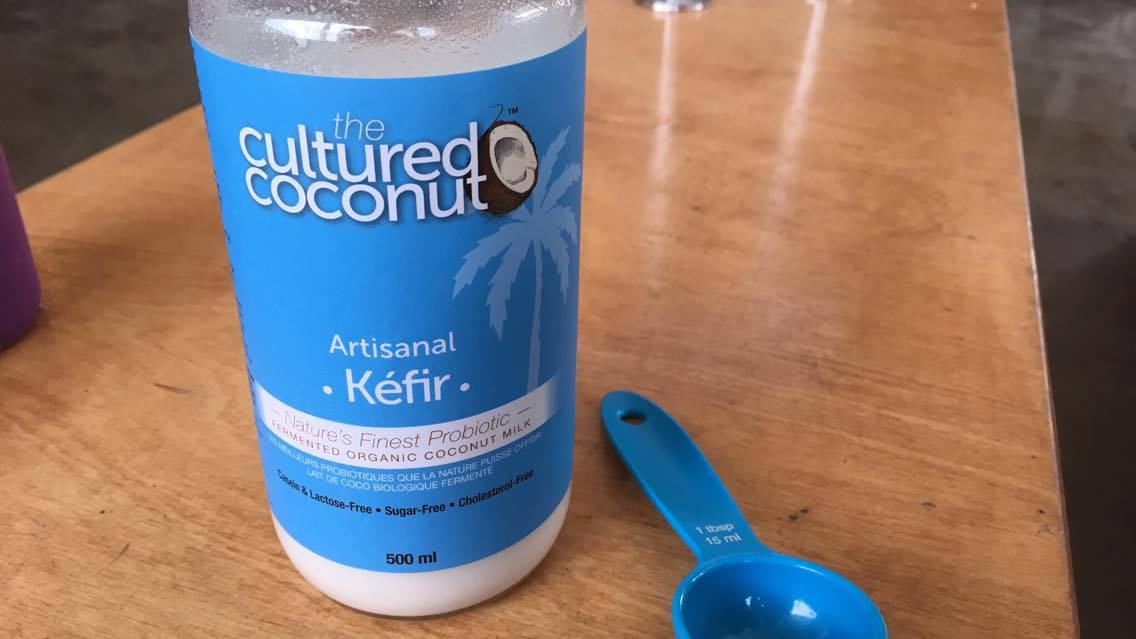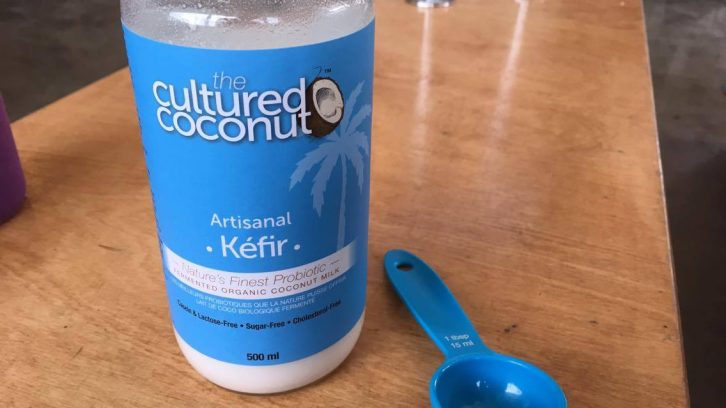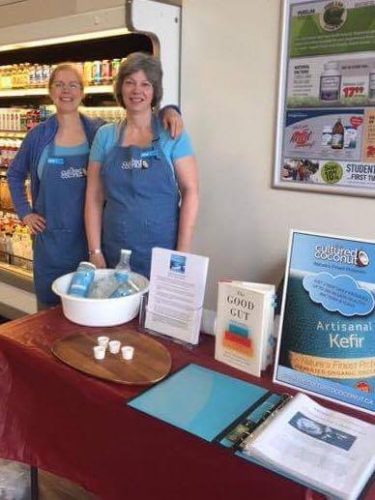Probiotic
The Cultured Coconut expands westward
Dairy-free kefir is hard to come by, so one Haligonian is trying to fix that

caption
Two tablespoons of The Cultured Coconut can provide up to 300 billion probiotic bacteria and up to 50 active strains.
caption
Two tablespoons of The Cultured Coconut can provide up to 300 billion probiotic bacteria and up to 50 active strains.Linda Peers, owner of The Cultured Coconut, didn’t live her life dreaming of running her own business.
The Cultured Coconut, a dairy-free probiotic drink, was first sold at Pete’s Fine Foods. Peers took a bottle with her to Luckett Vineyards, did her elevator pitch to Pete Luckett, and the rest is history.
It just sort of came about and evolved,” says Peers, who officially launched The Cultured Coconut on May 7, 2015.
They are now in over 45 retail stores in Nova Scotia and New Brunswick. It’s been over a year since Peers has called a retailer to introduce their product, as retailers are now asking them for it.
“It’s all because people walk in there; it’s by word of mouth,” says Peers.
Just last month they expanded to Ottawa, when Peers and her sister Anne Hebb, who also works at The Cultured Coconut,did demos at the Natural Food Pantry.

caption
Linda Peers (left) and her sister, Anne Hebb (Right) doing a demo in Ottawa at the Natural Food Pantry.Elena Skok, assistant manager at the Natural Food Pantry, says that “Kefir and fermented foods have been very popular right now, but it’s hard to find a non-dairy kefir.”
The Natural Food Pantry was really interested in the product and reached out to The Cultured Coconut about getting the product to Ontario.
Skok says it has been really well-received. They sold out in less than two weeks – much faster than anticipated.
Kefir is delivered by truck, and even though Peers says the demand is there to expand further, the logistics of shipping get a bit complicated and pricey with glass bottles that have to be refrigerated.
“I wish I could just snap my fingers and have it everywhere,” says Peers.
For the foreseeable future, Peers says Ontario is as far as they’ll ship.
The kefir
Peers is lactose intolerant. She became interested in kefir, but soon discovered it was all dairy based. Coincidentally, she had just started making coconut milk as an alternative to dairy.
“I just got curious,” says Peers. “I started doing the research.”
She discovered there is enough naturally occurring sugars in coconut milk for it to be fermented. Peers then bought milk kefir grains at a farmers’ market – the first and only time she’s bought them.
Many kefirs are made from a powdered starter kit, but Peers says she “wanted to do it the right way.”
The name “milk kefir grains” is misleading. It doesn’t contain wheat or milk; instead, it looks like spongy pieces of cauliflower, says Peers. It’s a symbiotic culture of bacteria and yeast (SCOBY).
It’s the same idea as kombucha, a SCOBY that Peers says looks like a “big slab.”
“Our guys are small and really cute,” she says.
Peers talks about her milk kefir grains like they are her most prized possession and need constant tender love and care. They even require a babysitter when she’s away.
“When they’re not in our coconut milk, they have to be kept alive,” she says.
Their process
It all starts by making coconut milk, which is then put into “a gazillion” mason jars.
Next, they scoop in the milk kefir grains, air locks are put on and the jars remain in a room temperature setting while they ferment.
“It took a lot of experimenting to figure out the recipe for the coconut milk, the number of grains to use and the temperature,” says Peers.
The grains eat the naturally occurring sugar and as they do they infuse the coconut milk with healthy bacteria and yeast.
Peers compares it to putting a bag of green tea into water; after the infusion occurs what’s left is a healthier liquid full of antioxidants.
Two tablespoons of The Cultured Coconut can provide up to 300 billion probiotic bacteria and up to 50 active strains. Kefir or yogurt in grocery stores usually contain two to three billion, says Peers.
So far, they’ve produced almost 25,000 bottles – all done by hand.

